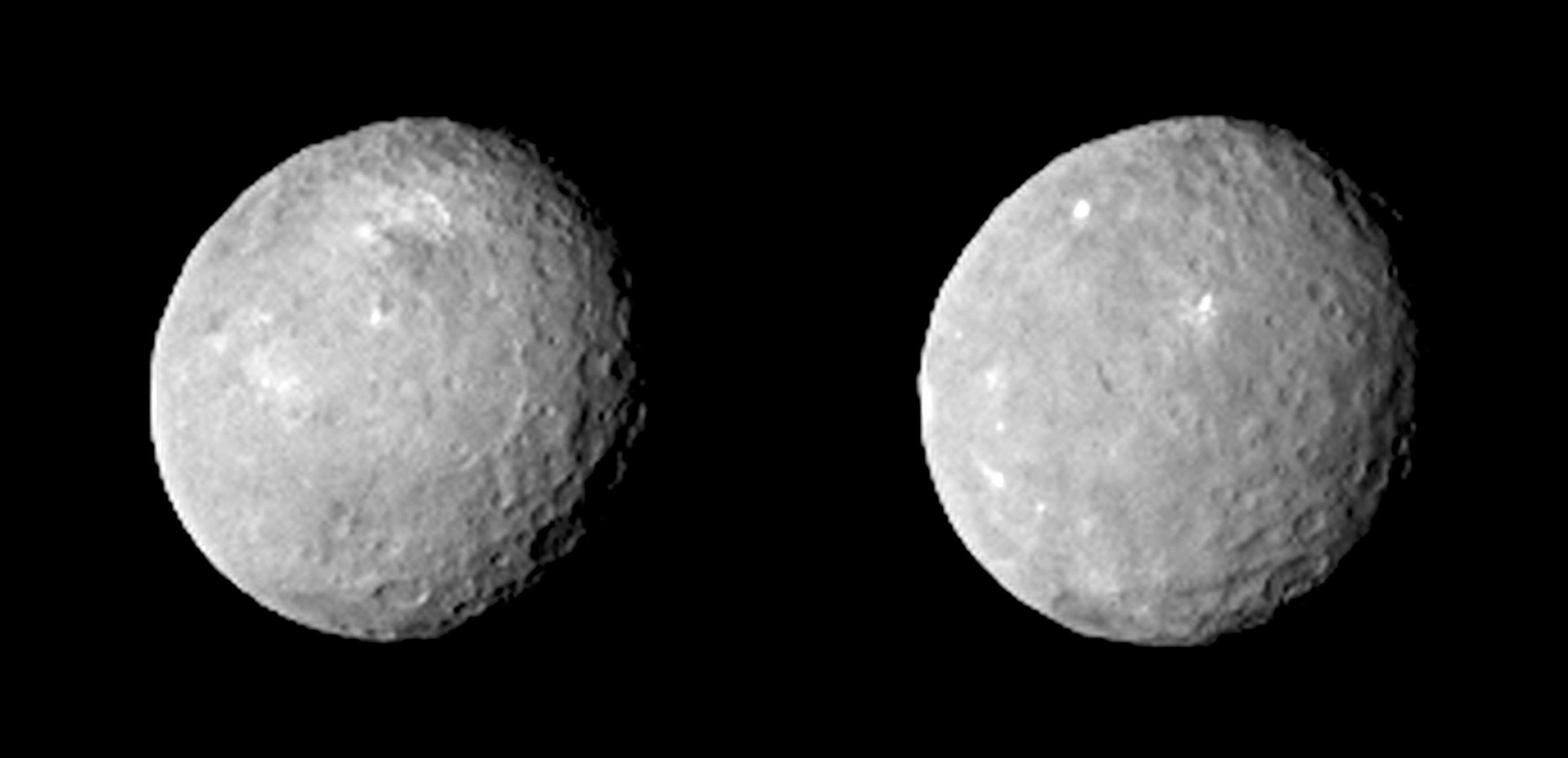
Europe's last cargo spacecraft came down to Earth in a fiery blaze, scientists reported seeing mysterious plumes emanating from Mars and NASA announced that it would like its planned Europa mission to search for signs of alien life on the icy moon, if possible. Here are Space.com's picks for the best space stories of the week:
Europe's last cargo spaceship returns to Earth
The European Space Agency's fifth Automated Transfer Vehicle (ATV-5) burned up in Earth's atmosphere as planned Sunday (Feb. 15), bringing an end to the ATV program, which had helped supply the International Space Station since 2008. [Full Story: Europe's Last ATV Space Station Freighter Makes Fleet's Final Re-Entry]
Mysterious Mars plumes spotted
Astronomers have spotted plumes of gas erupting from the surface of Mars, a phenomenon unlike anything observed before on the Red Planet. The plumes' origin remains a mystery. [Full Story: Mysterious Plumes on Mars Have Scientists Stumped]
NASA wants Europa mission to search for alien life
NASA officials have asked scientists to consider ways that a planned mission to Jupiter's ocean-harboring moon Europa could hunt for signs of alien life in the plumes of water vapor that apparently blast into space from Europa's south polar region. [Full Story: NASA Europa Mission May Search for Signs of Alien Life]
Get the Space.com Newsletter
Breaking space news, the latest updates on rocket launches, skywatching events and more!
Will a submarine explore the seas of Saturn's moon Titan?
Scientists are developing a mission concept that would send a robotic submarine to explore the methane seas of Titan, Saturn's largest moon. Here's a look at what they want to do. [Full Story: NASA Space Submarine Could Explore Titan's Methane Seas]
Mars colony project narrows astronaut pool to 100 candidates
Mars One, a nonprofit organization that aims to land four exploreres on the Red Planet in 2025 as the vanguard of a permanent colony, has whittled its pool of astronaut candidates down to 100. More than 200,000 people originally applied back in April 2013. [Full Story: Private Mars One Colony Project Cuts Applicant Pool to 100 Volunteers]
NASA spacecraft spots tiny Pluto moons
NASA's New Horizons probe, which is cruising toward a highly ancipated flyby of Pluto this July, has gotten its first good looks at Nix and Hydra, two tiny moons of the dwarf planet. The photos should help the New Horizons team better understand the two satellites' orbits. [Full Story: NASA Spacecraft Spies 2 Tiny Moons of Pluto (Photos, Video)]
Star buzzed our solar system 70,000 years ago
A red dwarf star and its companion gave our solar system a close shave 70,000 years ago, coming within just 1 light-year of the sun. It was the closest known encounter between our sun and another star, scientists say. [Full Story: Close Call! 'Scholz's Star' Grazed Our Solar System 70,000 Years Ago]
Dawn probe sees more white spots on dwarf planet Ceres
NASA's Dawn spacecraft, which will enter orbit around the dwarf planet Ceres on the night of March 5, has photographed more mysterious white spots on the object's surface. [Full Story: Mysterious Bright Spots Shine on Dwarf Planet Ceres (Photos)]
Two-year anniversary of Russian meteor explosion
A meteor exploded over the Russian city of Chelyabinsk on Feb. 15, 2013, injuring more than 1,200 people. Two years later, scientists still don't know where the Russian meteor came from. [Full Story: Russian Meteor's Origin Remains Mysterious 2 Years Later]
Galaxy merger captured by Hubble telescope
A gorgeous photo by NASA's Hubble Space Telescope shows a spiral galaxy getting twisted out of shape while merging with a smaller galactic neighbor. Scientists used Hubble observations to create a video of the merger as well. [Full Story: Galaxy Merger Caught in Stunning Hubble Telescope Photo, Video]
Follow Mike Wall on Twitter @michaeldwall and Google+. Follow us @Spacedotcom, Facebook or Google+.
Join our Space Forums to keep talking space on the latest missions, night sky and more! And if you have a news tip, correction or comment, let us know at: community@space.com.

Michael Wall is a Senior Space Writer with Space.com and joined the team in 2010. He primarily covers exoplanets, spaceflight and military space, but has been known to dabble in the space art beat. His book about the search for alien life, "Out There," was published on Nov. 13, 2018. Before becoming a science writer, Michael worked as a herpetologist and wildlife biologist. He has a Ph.D. in evolutionary biology from the University of Sydney, Australia, a bachelor's degree from the University of Arizona, and a graduate certificate in science writing from the University of California, Santa Cruz. To find out what his latest project is, you can follow Michael on Twitter.









